
.jpg)
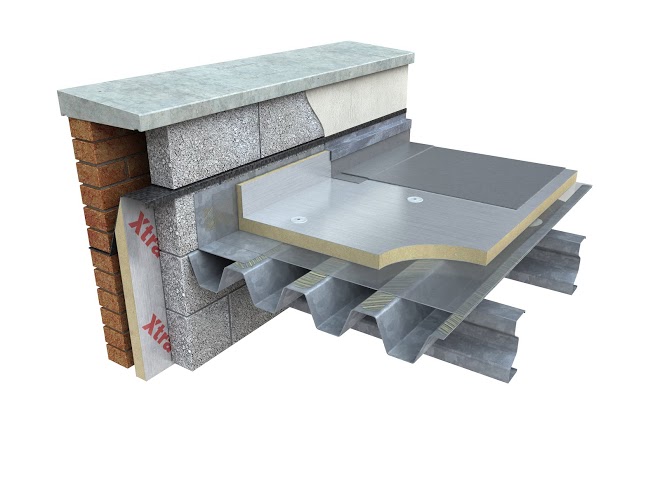

Xtratherm’s extensive range of foam insulation products with unique performance characteristics has been engineered for any product specification, providing cost-effective, certified solutions to the construction industry for over twenty years.
Brochures for download
Polyisocyanurate (PIR), the basis of rigid insulation boards, is a material that was invented in 1937 and has been used as an insulation material ever since. Compared to traditional insulation materials PIR rigid insulation boards offer more advantages over other traditional insulation materials.

Polyisocyanurate (also known as polyiso or PIR) is essentially an improvement on polyurethane (PUR). The proportion of methylene diphenyl diisocyanate (MDI) is higher than for PUR and instead of a polyether polyol, a polyester derived polyol is used in the reaction. Catalysts and additives used in PIR formulations also differ from those used in PUR. Advantages of polyisocyanurate over polyurethane are...
Rigid polyurethane (PUR) and polyisocyanurate (PIR) insulation products are highly effective, lightweight and many have the ability to bond to most materials. Their excellent thermal conductivity and high strength to weight ratio, combined with great manufacturing versatility provides a range of products. As a result, PIR/PUR insulation products are the natural choice for most construction insulation applications.
Wide experience, supported by accelerated laboratory tests have proved time and time again that PIR rigid insulation boards are amongst the most durable construction products. They will not rot, shrink, absorb moisture, or decay as some fibre board or organic insulation materials may and so they will deliver design insulation values throughout the full life of the building.
Rigid PUR insulation products are made by reacting a liquid polyol component with a liquid polymeric isocyanate, Methylene Diphenyl di-Isocyanate (MDI), component in the presence of a blowing agent and other additives. The mixed components then react exothermally to form a rigid thermosetting polymer and since the blowing agent evaporates during this exothermic reaction a rigid closed cell low density insulation product is created. Excellent insulation is achieved because the gas trapped within the closed cell structure has a very low thermal conductivity and there is minimal heat conduction through the solid cell walls due to the low density, where approximately 97% of the volume of the foam is trapped gas.
Rigid PIR differs from PUR in that it is produced using an excess of the MDI component. In the presence of an appropriate catalyst the excess MDI reacts with itself to form isocyanurate which is characterised by greater heat stability. The resultant PIR insulation products exhibit increased fire performance and reduced combustibility and higher working temperature limits compared to PUR and when incorporated into building products, can meet some of the most demanding fire performance requirements such as those currently stipulated for some applications by the insurance industry.
Foam plastic insulations are either thermoplastic or thermoset materials. PIR insulation products are thermoset, which means that once manufactured, they are rigid, will not soften or melt and remain strong, even at elevated temperatures. They can withstand elevated temperatures without losing their insulating power. Extruded polystyrene is a thermoplastic material which softens at 165°F and melts in the 200°F to 210°F range.
Extruded polystyrene can be attacked by many petroleum based solvents in adhesives, paints, stains, water repellent and preservative coatings, and in bituminous waterproofing. Solvents should be allowed to evaporate before touching the foam. As many contractors have discovered, the application of these common construction materials causes the extruded polystyrene to dissolve. This problem is solved by using PIR insulation. It is not affected by these materials and therefore offers a level of comfort that the insulation value you purchase today will remain in place year after year.
Extruded polystyrene can be attacked by many petroleum based solvents in adhesives, paints, stains, water repellent and preservative coatings, and in bituminous waterproofing. Solvents should be allowed to evaporate before touching the foam. As many contractors have discovered, the application of these common construction materials causes the extruded polystyrene to dissolve. This problem is solved by using PIR insulation. It is not affected by these materials and therefore offers a level of comfort that the insulation value you purchase today will remain in place year after year.
PIR has a high sound-absorption value. Transference of sound is kept to a minimum, giving the ability to both contain and block noise.
In roof applications, permeable facers are preferred and the average thickness of foam used is 50mm (2 inches). At this thickness, the advantage in thermal performance of PIR over Extruded polystyrene is approximately 30%. Thermal Performance of PIR over fibrous blankets is over 80%. This benefit produces meaningful savings in energy consumption as well as installation costs.

These are the estimated performance of products that are newly installed. Performance is degraded over time when the thickness is reduced by gassing off from certain insulation materials resulting in lower operating thickness. In tropical weather where humidity is high, condensation build up within the insulation material itself is detrimental to thermal performance. Insulation material that does not absorb water remains a superior benefit when selecting insulation products.
Due to having a closed cell structure, PIR is a hydrophobic product meaning water absorption is negligible. This allows the thermal performance and integrity of the product to be retained regardless of water exposure.
Moisture can be present in a wall or roof system as liquid water or water vapour. These 2 distinct and separate phases of water that can behave very differently.
In a tropical climate with high humidity levels, the real enemy of insulation performance is water vapour. If water vapour passes into and condenses in an insulation, the overall thermal performance will decrease. If this happens and the dew point temperature is reached, water will condense inside the cells reducing the insulation value. What was initially a rigid insulation may also lose its rigidity when exposed.
The real measure of a material's resistance to water vapour is through testing the product via ASTM E96, a measure of water vapour transmission. This method produces permeance ratings, or perms. Typically, Xtratherm FR/ALU foil faced sheathings have perm ratings of less than 0.03, (water vapour transmission = 0.0 g/hr.m2 for PIR of panel 50mm thick).
With fire performance being an important selection consideration for many projects, Xtratherm was committed to using the highest fire-rated core. PIR has a class 1 fire rating and will self-extinguish as soon as the cause of the fire is removed. PIR insulation is manufactured through an irreversible chemical reaction, this means it cannot melt.
Xtratherm meets the strict standard of both FM Class 1 Approvals (FM 4450/4470), UL 1256, and CAN/ULC S126M
.jpg)
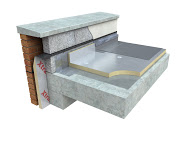
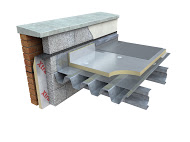

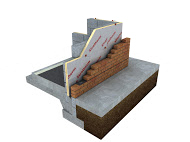
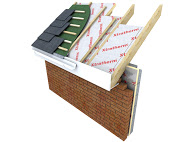
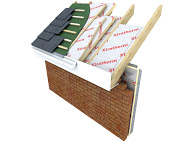

| 1. | Paramit (Malaysia), Bukit Minyak, Penang | 2. | Setia Eco-Park Bungalow, Shah Alam |
| 3. | Alila 2, Tanjung Bungah, Penang | 4. | Petronas RAPID; Package 5 - TOYO - OP-1, Pengerang, Johor |
| 5. | Petronas RAPID; Package 5 (TTML) Pengerang, Johor | 6. | Sarnatect Factory, Sg. Buloh |